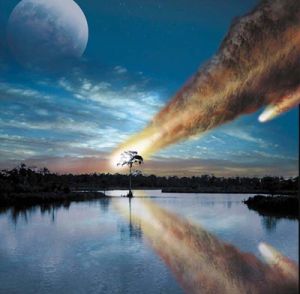
Known as 'the Younger Dryas', it has been also called the Big Freeze and the Last Blast of the Ice Age - but for researchers trying to understand the Earth's ancient climate, it's one of the big mysteries of the field.
Around 12,900 years ago, Earth was on a steadily warming trend after almost 100,000 years of harsh glaciation, during which ice sheets placed a swathe of the northern hemisphere under a dead hand, extending their thrall as far as south as New England and Wales.
Unexpected plunge in temperature
But just as the glaciers were beginning to retreat, and an easier life at last beckoned for Earth's tiny population of humans, everything went into reverse.
Temperatures fell dramatically by up to 8˚C, heralding a cruel winter that would last 1,300 years. But what caused it?
Crunching powerful equations and weighing fresh evidence, an astrobiologist in Britain is pointing the finger at an unusual culprit.
Massive comet
Earth collided with debris from a vast comet, measuring 50 to 100 km across, that had wandered into the inner Solar System some 30,000 years ago before breaking up, says Bill Napier, a professor at Cardiff University's Astrobiology Centre.
The impact unleashed a firestorm that blanketed the atmosphere with ash and dust, reducing heat and light from the Sun, Napier suggests in Monthly Notices, a journal of the Royal Astronomical Society.
What is worrying, adds Napier, is that our planet still crosses the path of the remaining orbiting cometary rubble, a well-observed, although still enigmatic, phenomenon called the Taurid Complex. Many of these fragments are tiny and their burnup in the atmosphere, causing periodic showers of meteors.
Near-Earth objects
Other pieces, though, may not be so enchanting. They are not big enough to inflict global extinctions like the event 65 million years ago that wiped out the dinosaurs, but they could still devastate entire regions.
"It [the Taurid Complex] includes at least 19 of the brightest near-Earth objects," says Napier.
"Sub-kilometre bodies [objects measuring 1,000 [metres] across or less in meteor streams may present the greatest regional impact hazard on timescales of human concern."



Reader Comments
to our Newsletter